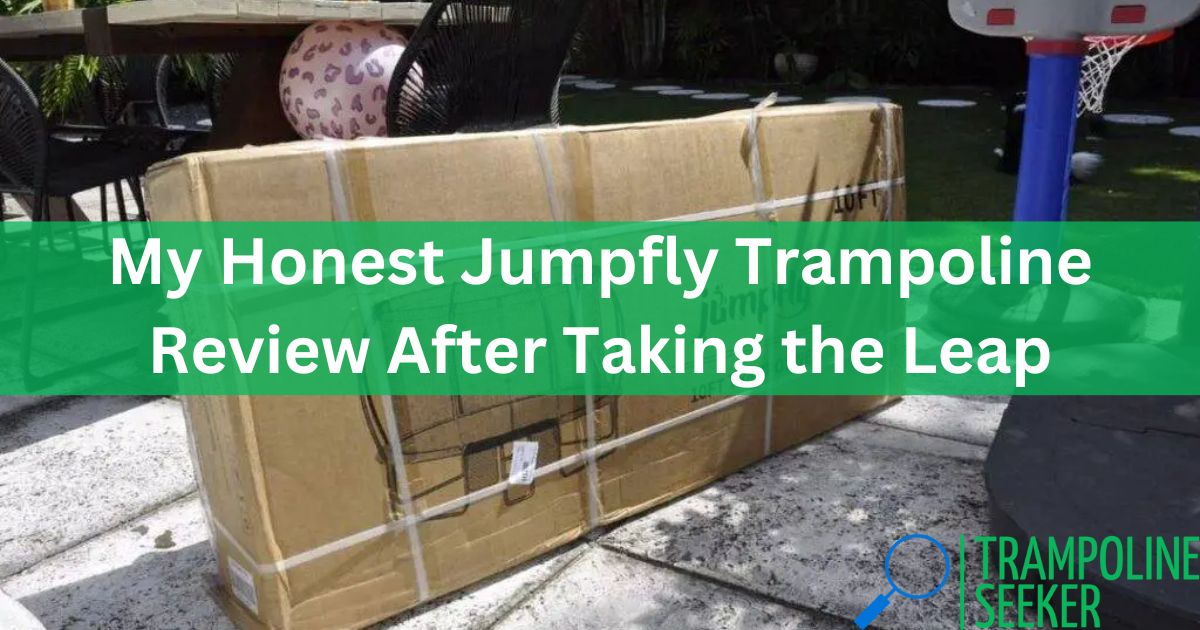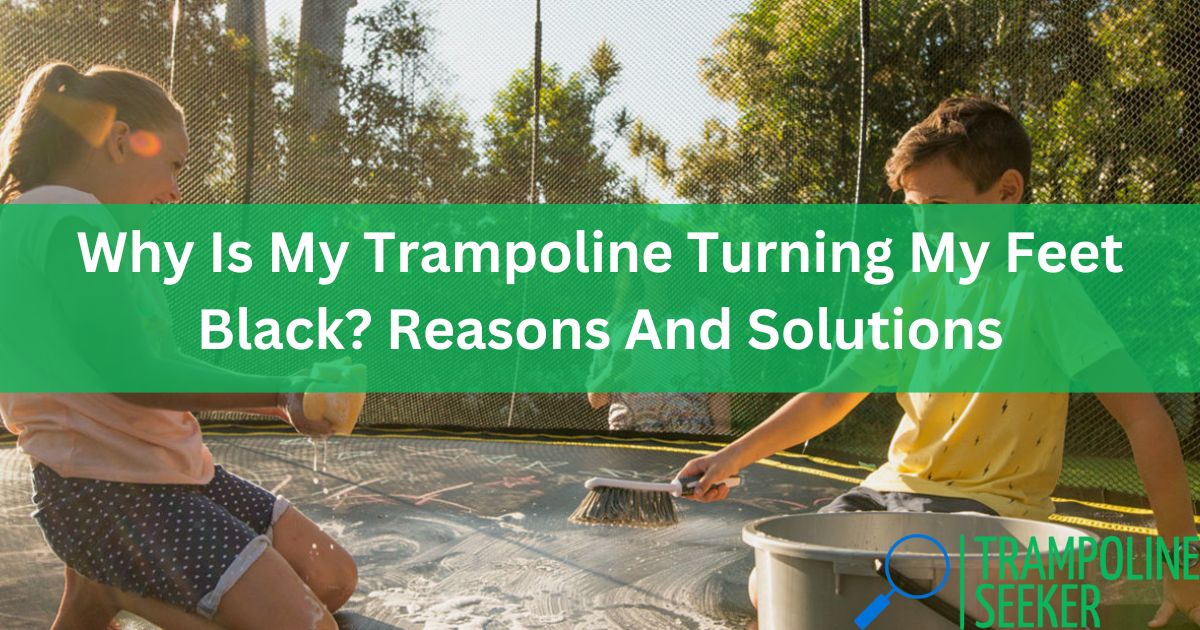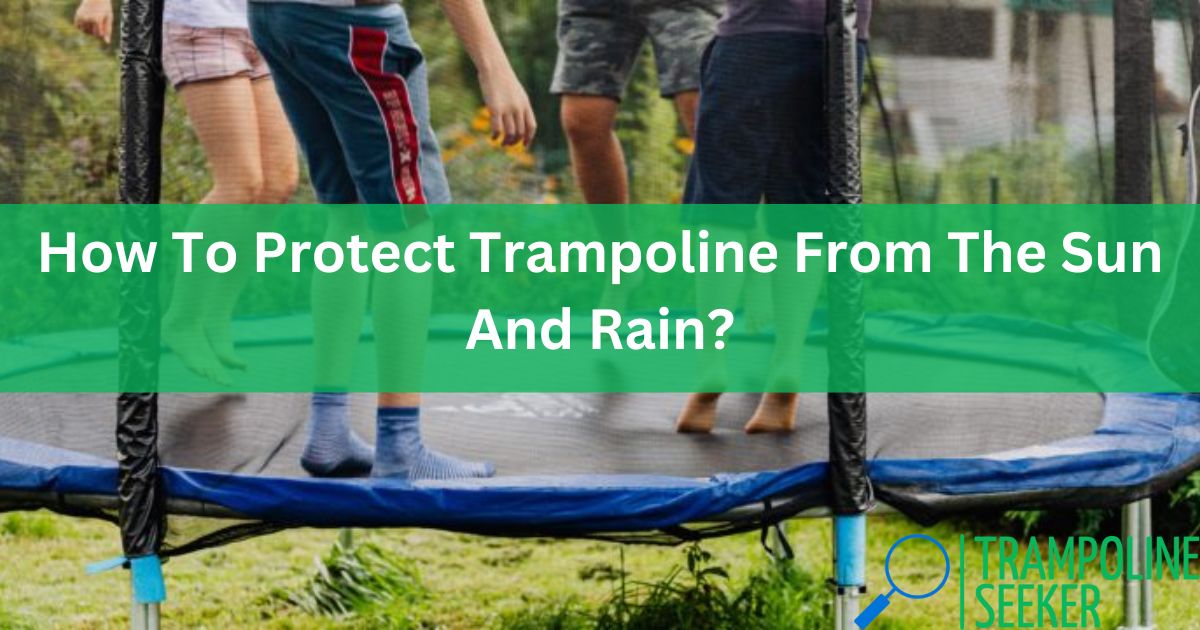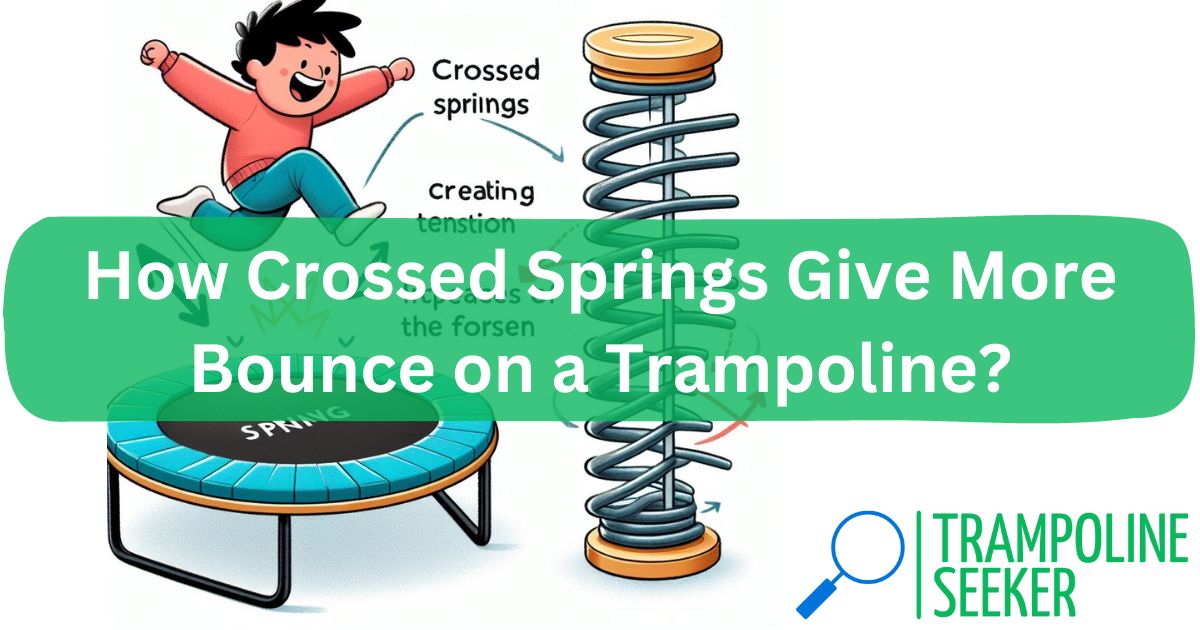Trampolining is supposed to be just fun and games – so why would anyone’s ribs end up hurting afterwards? 😣 This was my question too when I first started feeling pain around my rib area every time I jumped on my trampoline at home. At first, I thought maybe I had injured myself somehow. But when the discomfort persisted, I decided to investigate further.
In my research, I discovered that rib pain after trampoline use often occurs due to improper landing, muscle strains from all the twisting motions, re-injury of previous damage, or weak bone condition in some people. Ensuring proper form, gentle jumps, stretch warm-ups, and cleared medical fitness can help prevent such discomfort.
The key is understanding what’s causing your pain so you can take steps to address the issue and prevent it from happening again.
Keep reading to learn about common culprits behind rib discomfort from trampoline jumping and how you can bounce happily without pain!
5 Causes Of Rib Pain After Trampolining

Rib pain from trampoline jumping likely signals you’ve sustained some sort of chest injury. 🤕 Identifying the specific cause will enable appropriate treatment so you can get back to bouncing safely. Here are top reasons ribs might hurt post-trampolining:
1. Improper Landing 👇
Landing awkwardly on the trampoline bed transmits intense pressure upwards through the body. If ribs take the brunt, it can cause anything from bruising to dangerous fractures depending on impact force. Always land softly on the padded surface with knees bent to absorb shock.
2. Muscle Strains 💪
The constant bounding and twisting entailed in trampolining works muscles not normally used. Overdoing it can overstretch chest tissues and cause painful sprains. Listen to warning twinges and rest strained muscles to recover. Gentle passive stretches can alleviate discomfort.
3. Prior Rib Injuries 🦴
Preexisting rib trauma like untreated hairline fractures or unhealed cartilage damage makes further injury during trampolining more likely. Even tiny unnoticed cracks from earlier accidents can flare up with the stresses of jumping. Get checked by a doctor to clear bones for trampoline exertion.
4. Weak Bone Structure 👵
Those over 30 or having osteoporosis/osteopenia must exercise additional caution when trampolining. Their relatively delicate bone structure cannot endure the same stresses as young healthy skeletons. Bad landings risk cracked ribs or breastbone displacements resulting in tremendous agony.
5. Hard Objects on Trampoline ⚠️
Hopping on a trampoline carrying stuff or with debris left on the bouncing mat also commonly causes rib injuries. A comic book, stone or toy falling underfoot as you land can inflict blunt force trauma. Clear away all objects before jumping and keep hands free.
So in a nutshell, rib pain often happens post-trampolining because of excess pressure on the chest area from bad form. Sometimes previous unnoticed weaknesses get revealed. Understanding the most likely reasons helps in strategizing preventions. But if discomfort persists for over two weeks, consult an orthopedic specialist to investigate further.
Related Topics:
- Can Jumping on a Trampoline Hurt Your Brain
- Why Do My Kidneys Hurt on a Trampoline?
- Chest Hurts When Jumping On Trampoline
- Why Does My Neck Hurt After Jumping On A Trampoline?
- Trampoline Back Pain
Preventing Rib Injuries & Pain When Trampolining

Now that we know why rib pain happens after jumping on a trampoline, it’s equally important to discuss preventative strategies to bounce blissfully. 😊 Here are some handy pro tips:
1. Warm Up Stretches 🤸♀️
Stretch hamstrings, torso and shoulders thoroughly before getting on the trampoline. This limbers muscles/tendons and enhances flexibility so they can withstand exertion better. Cool down stretches post-exercise also help reduce next-day aches.
2. Maintain Proper Form 🤸♂️
Stand upright with core braced while jumping to keep body stable. Use both arms and legs evenly instead of twisting one side only. Coordinate breathing rhythm with jumping cadence. Always land with knees slightly bent and centrally on trampoline to avoid falling off.
3. Jump Carefully 👟
Control jump height so landings are gentle. No reckless bouncing and risky flips! Beginners should grip stability bar if needed. Avoid overexertion by pacing yourself. Take breaks to rest fatigued muscles. Hydrate well between jumps.
4. Inspect Trampoline Surface 👀
Check padded surface carefully before stepping on to eliminate injury risks from toys, stones, twigs or other objects. Ensure noise-reducing external padding does not have holes exposing hard springs/frame which could hurt you. Replace aging mats to maximize shock absorption.
5. Consult Doctor If Needed 👨⚕️
Those with prior injuries, heart conditions or joint problems should exercise on trampolines only under medical guidance. If ribs remain painful for over two weeks despite rest/medication, seek medical help to diagnose the issue correctly and prescribe suitable treatment. X-rays might be needed to check for unseen fractures.
If you take such proactive injury-proofing steps, trampolining can be kept joyful! Some forethought and caution goes a long way in helping you bounce for years without rib pain. 😁
Here is a table summarizing the causes and prevention of rib pain after trampoline jumping:
| Cause | Prevention |
|---|---|
| Improper Landing | Land gently with knees bent |
| Muscle Strains | Warm up stretches; Don’t overexert |
| Prior Rib Injuries | Get doctor approval before trampolining |
| Weak Bones | Exercise caution if aged or having osteoporosis |
| Hard Objects on Surface | Clear away all debris before jumping |
The Bottom Line
While a common trampolining after-effect, there’s no need to endure troublesome rib pain that curtails your enjoyment. 😫 Understanding precisely what causes chest discomfort helps immensely in banishing it for good. With awareness of potential pitfalls, adequate preparation and due care, happy pain-free bouncing is totally achievable! So gear up by stretching those muscles, and hop on your trampoline without worries. 🙂
FAQs
Q1. Can trampolining injure ribs?
Yes, trampolining does carry a risk of rib injuries like fractures and bruises if you land badly after an awkward jump. The sudden forceful impact focuses immense pressure on the ribcage area which can damage bones/cartilage.
Q2. Why might a child’s chest hurt after jumping on a trampoline?
Two common benign causes for a child’s chest hurting post-trampoline jumping are costochondritis (breastbone inflammation) and intercostal muscle strain from overstretching tissues between ribs. Serious causes like blood clots are very rare. Mostly such pain resolves itself.
Q3. What does bruised rib cartilage feel like?
Bruised ribs cause a sharp pain when breathing deeply/moving the affected side. Tenderness is felt on pressing the injured area. Symptoms like difficulty inhaling fully or arm mobility issues on that side warrant prompt medical evaluation for fractures.
Q4. Can jumping cause lower abdominal pain?
Yes, the constant upward thrusts from jumping can jar organs, stressing abdominal muscles/ligaments beyond capacity. This leads to cramping discomfort, especially if core strength is low. Jumping on hard surfaces heightens such risk. Proper conditioning alleviates such exercise-related pain.
Q5. How can side stitches when trampolining be prevented?
Warming up thoroughly before trampoline jumping, maintaining good hydration levels throughout, and avoiding overexertion are key ways to prevent painful diaphragm spasms known as side stitches. Breathing rhythmically while jumping also minimizes likelihood of this temporary nuisance.
Articles You May Like to Read:













